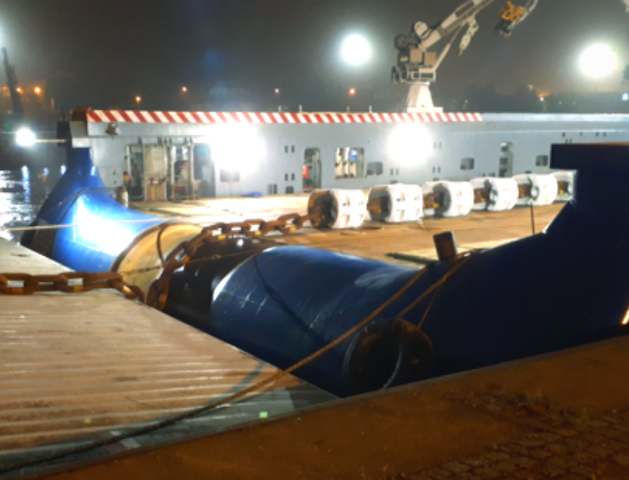
The most important consideration when designing a clump weight is the close collaboration with the client. This will provide the knowledge about the configuration which the mooring system will secure as design and size of the platform, site conditions and water depth.
This will ensure that the proposed clump weights will fully meet the requirement during their operational life, contributing to a reliable and cost effective mooring system.
In order to provide the most accurate solution - a clump weight, meeting all requirements, the FMGC dedicated teams are working closely with the customer from the basic design to the mass production.
The design of a FMGC clump weight has 4 main objectives:
- to ensure restoring forces by providing a larger reaction to the floating platform displacements;
- to limit excessive line tensions in order to avoid breakages;
- to limit vertical loads on the anchors when clump weights are positioned at the touchdown point;
- to provide a reduction of the mooring line length by adding additional masses in specific zones of the mooring system.

FMGC Clump Weights at the Installation Site
How Does the Purpose of the Clump Weights Impact Their Design?
Clump Weights have different purposes and locations on the mooring lines and are subject to various environmental conditions.
For example, clump weights in a catenary mooring system should provide restoring forces to the excursion movement or limit the vertical loads on the anchors. In this case a clump weight system based on several units spread along a section of the mooring line near the touchdown point is the most suitable solution.
On the other hand, in a mooring system with higher tension (semi-taut for example) and if the purpose is to limit excessive line tension and provide a reaction to the floating platform displacements, a system with heavier clump weights, positioned closer to the floating platform, seems to be more efficient.
Considering the Installation Site Specifications
However, defining the purpose and the position of the clump weights is not sufficient. In order to ensure optimal efficiency and reliability, the clump weights need to be designed in accordance with the specifications of the project and the site. This includes a proper dimensioning, considering the design life and the loads to withstand, but also the interactions with other mooring components.
Besides considering the link between the assigned purpose of the clump weight and the associated design, the installation site and its specificities introduce another important element when designing a clump weight. Indeed, the clump weight is expected to withstand the loads applied during its entire operational life.
The requirements during installation, both onshore and offshore as available handling & lifting systems and vessels should be considered as well.
Grey Cast Iron
FMGC clump weights are made of cast iron with a lamellar microstructure EN-GJL-200 with the high density of 7,1 (in air), sourced by high-quality European recycled raw material.
Thanks to the FMGC manufacturing process, based on the molding technique, cast iron is very valuable material when it comes to tailored designs. Indeed, it allows a wide range of shapes and the implementation of specific elements such as pad eyes, inserts, connection systems, etc.
The compacity, density and efficiency of cast iron are far better compared to most of the other possible material for offshore purposes. Furthermore, cast iron features great corrosion and abrasion resistance.
Download the FMGC Flyer on Cast Iron
The FMGC Clump Weights Offer
Clump weights can be applied on a wide range of offshore installation, subject to various environmental conditions. Therefore their design should successfully cover the requirements of various mooring systems. FMGC has developed two clump weights configurations, adaptable to every mooring systems specificities. In case a further customization is needed, our team is always ready to provide a solution:
- The “distributed” configuration represents a set of medium-sized clump weights, distributed over a segment of the mooring line. This configuration optimizes the effectiveness and the cost of the solution thanks to the proportional recovery of the loads and the most accurate dimensioning.
- On the contrary, the “mutualized” solution consists of one clump weight from several tons up ton hundred of tons, attached to one specific point of the anchor line. This configuration neutralizes some of the impact of wind and wave and thus limits the tensions on the anchoring line.
The FMGC clump weights system is fully tailorable in accordance with the mooring design specifications and the requirements of the customers. The weight, the shapes, the chain link footprint, the lifting and fastening systems for example can be designed and adapted accordingly.
FMGC is also able to support the customers in the validation phase of the clump weights by providing:
- Numerical analysis of the clump weights in specific conditions (ULS, FLS..);
- Numerical analysis of the interactions between the clump weights & other mooring componentes (chains, shackles...);
- Scale 1 tests (fitting test, drop test…).
FMGC is dedicated to helping professionals to overcome the challenges with greater efficiency and higher output.
